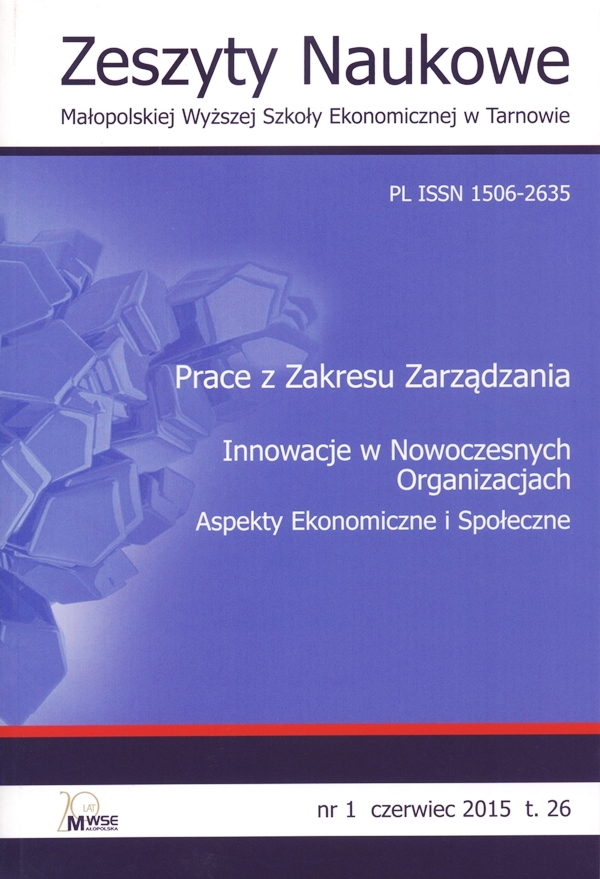Abstract
A motive for this publication theme choice is the wish to show meaningful changes and transformations which reached the tourist market and it is also connected with the appearance of new forms of spare time spending. Such phenomena as couchsurfing, in the meaning manner, influence the tourist traffic both quantitatively and qualitatively. Ideally they reflect existing trends and the demand on the low-budget tourism which reigns in the current situation of economic crisis. The aim of the article is to present the novel and innovative part of couchsurfing as the newly developed product on the tourist market which ideally suits people looking for new experiences in spending their leasure time. The publication shows the meaning of couchsurfing phenomenon as an essential and important element characterizing the contemporary tourist market, possessing also stigmas of fashion and lifestyle embracing more and more wider social groups in the area of Poland and also abroad. The article contains the results of the author’s research. The survey was carried out between July and August 2011 on the group of randomly selected people who actively cultivate coachsurfing. The respondents were the dwellers of cities and villages and they were the members of wwww.coachsurfing.com portal. Some valuable information was also obtained through direct conversations and telephone interviews with the participants of this tourist activity. Due to the diverse professional profile, age or patchy experience in practicing cauchsurfing, the results were very representative. The publication, presenting the analysis of statistical data concerning the new kind of tourism, evaluates changes that happened and also makes an attempt of prognoses of the idea of couchsurfing development in the face of the uncertain future economic situation.
References
Alejziak, W., Marciniec, T. (2003). Międzynarodowe organizacje turystyczne. Kraków: Albis. ISBN 83-906452-3-8.
Bombol, M., Dąbrowska, A. (2003). Czas wolny. Konsument, rynek, marketing. Warszawa: Liber. ISBN 83-88170-53-8.
CouchSurfing (2013). W: Wikipedia: the Free Encyclopedia [online, dostęp: 2014-06-03]. Dostępny w Internecie: www.wikipedia.org/wiki/Couchsurfing.
Couchsurfing (po 2004). About Us ‒ Couchsurfing Story [online, dostęp: 2014-06-03]. Dostępny w Internecie: wwwcouchsurfing.org/n/about.
Couchsurfing. Statistics about Couchsurfing [online, dostęp: 2014-06-03]. Dostępny w Internecie: www.couchsurfing.org.statistics.
Couchsurfing. Travel the World, Explore Your City and Host New Friends [online, dostęp: 2014-06-03]. Dostępny w Internecie: www.couchsurfing.com.
Dziedzic, E. (2010). Regionalne badania konsumentów usług turystycznych. Warszawa: Polska Organizacja Turystyczna. ISBN 978-83-7336-313-7.
Gaworecki, W. (2010). Turystyka. Warszawa: PWE. ISBN 978-83-208-1871-0.
Gołembski, G. (2009). Kompendium wiedzy o turystyce. Warszawa: Wydawnictwo Naukowe PWN. ISBN 978-83-01-15814-9.
Kowalczyk, A. (2010). Turystyka zrównoważona. Warszawa: Wydawnictwo Naukowe PWN. ISBN 978-83-01-16491-1.
Luitweiler, B. (1999). The Seeds of Servas. Opening Doors for Peace. US Servas 50th Anniversary National Conference in San Francisco.
Rudnicki, L. (2004). Zachowania rynkowe nabywców. Mechanizmy i uwarunkowania. Kraków: Wydawnictwo Akademii Ekonomicznej. ISBN 83-7252-204-9.
Słaby, T. (2005). Are the Poles increasingly well off? Studies and Works of the Collegium of Management and Finance, 63.
The Hospitality Club (po 2002). About Us ‒ The Hospitality Club Story [online, dostęp: 2014-06-03]. Dostępny w Internecie: www.hospitalityclub.org/hospitalityclub/about.htm.
© Copyright by Małopolska School of Economics in Tarnów. The articles are available under the Creative Commons Attribution NonCommercial-NoDerivatives 4.0 International License


